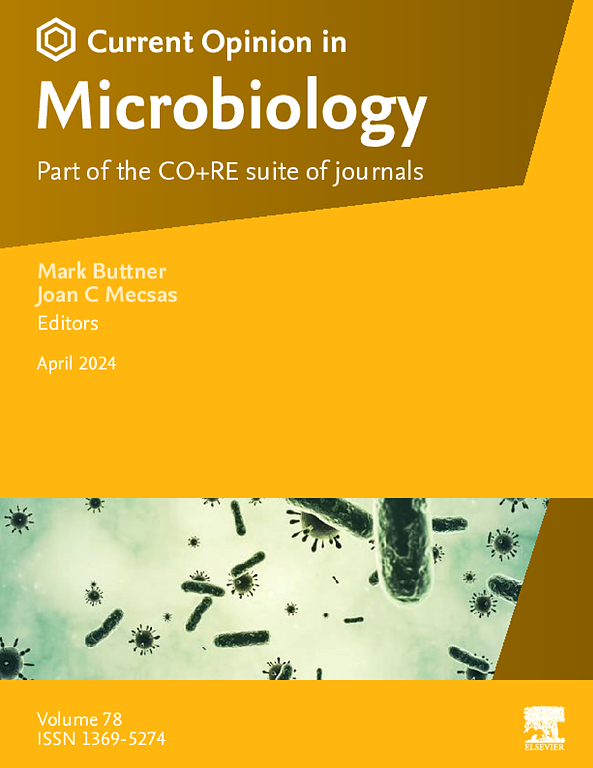两个一氧化二氮还原酶的故事:一个警世的观点
IF 7.5
2区 生物学
Q1 MICROBIOLOGY
引用次数: 0
摘要
一氧化二氮还原酶(N2OR)是环境中强效温室气体一氧化二氮(N2O)的唯一汇。经过几十年的研究,N2OR引起了新的关注,因为发现了一个以前未被认识的进化枝,现在被称为进化枝II。这一分支在不同的环境中表现出出乎意料的广泛的分类分布和流行,促使研究努力定义和分配独特的分支特异性特征。从这个角度来看,我们的目标是批判性地回顾和评估基于支系的二分类,解决在将支系身份与底物亲和力、耐酸性和空气耐受性等生理性状联系起来的过度简化和未解决的歧义。来自n2o还原菌株和富集菌株的越来越多的实验证据表明,两个分支之间的底物亲和力存在普遍差异。pH <下N2O还原的新发现5.0将长期寻找的嗜酸N2O还原完全归因于具有进化枝II nosZ的生物体,并且还试图将进化枝分离与耐氧N2O还原联系起来。然而,重要的是要注意,这种二元特征是基于有限的观察,缺乏对潜在机制的扎实理解,使其暴露于偏见和过度简化的风险。我们强调需要一个平衡的研究努力来建立生态生理学和生物化学之间的强大联系,从而能够更准确地评估基于枝的特征,并最终更深入地了解和有效地利用n2o还原生物。本文章由计算机程序翻译,如有差异,请以英文原文为准。
A tale of two nitrous oxide reductases: a cautionary perspective
Nitrous oxide reductases (N2OR) are the sole sink of the potent greenhouse gas nitrous oxide (N2O) in the environment. Having been studied for decades, N2OR have attracted renewed attention following the discovery of a previously unrecognized clade, now termed clade II. This clade exhibits unexpectedly widespread taxonomic distribution and prevalence across diverse environments, prompting research efforts to define and assign distinct clade-specific traits. In this perspective, we aim to critically review and evaluate dichotomous clade-based classifications, addressing oversimplifications and unresolved ambiguities in linking clade identity to physiological traits like substrate affinity, acid tolerance, and aerotolerance. Growing experimental evidence from N2O-reducing isolates and enrichments suggests a general difference in substrate affinity between the clades. Recent discoveries of N2O reduction at pH < 5.0 attribute the long-sought acidophilic N2O reduction exclusively to organisms possessing clade II nosZ, and attempts have also been made to relate clade separation to aerotolerant N2O reduction. However, it is important to note that such binary characterizations are based on limited observations and lack a solid understanding of the underlying mechanisms, exposing them to bias and oversimplification risks. We emphasize the need for a balanced research effort to establish a robust link between ecophysiology and biochemistry, enabling a more accurate evaluation of clade-based characterizations and, ultimately, a deeper understanding and effective harnessing of N2O-reducing organisms.
求助全文
通过发布文献求助,成功后即可免费获取论文全文。
去求助
来源期刊

Current opinion in microbiology
生物-微生物学
CiteScore
10.00
自引率
0.00%
发文量
114
审稿时长
6-12 weeks
期刊介绍:
Current Opinion in Microbiology is a systematic review journal that aims to provide specialists with a unique and educational platform to keep up-to-date with the expanding volume of information published in the field of microbiology. It consists of 6 issues per year covering the following 11 sections, each of which is reviewed once a year:
Host-microbe interactions: bacteria
Cell regulation
Environmental microbiology
Host-microbe interactions: fungi/parasites/viruses
Antimicrobials
Microbial systems biology
Growth and development: eukaryotes/prokaryotes
 求助内容:
求助内容: 应助结果提醒方式:
应助结果提醒方式:


